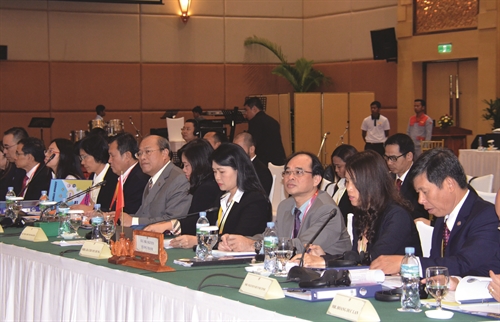From January 1 next year, the new Law on State Audit (the Law) will supersede the 2005 Law on State Audit. The Law is expected to create a legal basis for the organization and operation of the State Audit Office in accordance with the 2013 Constitution, enabling this institution to be capable of carrying out inspection and supervision of the management and use of public finance and assets. The Law will also contribute to the fight against corruption and waste.
Composed of 73 articles arranged in nine chapters, the Law stipulates the functions, tasks, powers, organization and operation of the State Audit Office, as well as powers and responsibilities of agencies, organizations and individuals involved in state audit activities.
Objects of audit
The Law defines the objects of audit in accordance with the Constitution. Accordingly, audited objects of the State Audit Office cover the management and use of public finance and assets of audited entities and activities related to such management and use.
As per the Law, public finance covers the state budget, national reserves, extra-budget state financial funds, finance of state agencies, people’s armed forces units, public non-business units, public service and goods suppliers, political organizations, socio-political organizations, socio-politico-professional organizations, social organizations, and socio-professional organizations using state budget funds, state capital in enterprises, and public debts.
Public assets include land, water resources, mineral resources, resources in the sea and airspace and other natural resources, state assets in state agencies, people’s armed forces units, public non-business units, political organizations, socio-political organizations, socio-politico-professional organizations, social organizations, and socio-professional organizations, public assets assigned to enterprises for management and use, state reserve assets, assets of infrastructure serving public interests, and other assets owned by all the people and managed, and invested and uniformly managed by the State in the capacity as the owner’s representative.
Compared to the 2005 Law, the new Law adds agencies assigned to manage and use public debts and enterprises in which the State holds more than 50 percent of charter capital as audited entities.
When necessary, the State Auditor General will decide to apply appropriate objectives, criteria, contents and methods of audit to enterprises in which the State owns 50 percent of charter capital or less.
Under Article 32, audit contents include financial audit, compliance audit and operational audit. Depending on the requirements of each audit, the State Auditor General will decide on its contents.
To ensure that audit activities can promptly serve the operation of competent state agencies, the Law sets the duration of an audit not exceeding 60 days. This duration may be extended once for not more than 30 days as decided by the State Auditor General in complicated and necessary cases. He/she will also decide on the specific duration of an audit to evaluate the economic efficiency, effect and effectiveness of the management and use of public finance and assets nationwide.
 |
| Deputy Auditor General Nguyen Quang Thanh (third from right) at the third general meeting of the ASEAN Supreme Audit Institutions (ASEANSAI) __Photo: Xuan Khu/VNA |
Functions and tasks of the State Audit Office
To be in line with international practices and recommendations of the International Organization on Supreme Audit Institutions (INTOSAI), the Law assigns the State Audit Office with the functions to conduct evaluation and verification and make conclusions and proposals regarding the management and use of public finance and assets.
The Law has perpetuated the provisions of the 2005 Law with respect to the tasks of the State Audit Office, such as deciding on, and organizing the implementation of, annual audit plans, conducting audit at the request of the National Assembly, the National Assembly Standing Committee, the Government or the Prime Minister, considering and deciding on audit when so requested by the Standing Bodies of provincial-level People’s Councils and provincial-level People’s Committees.
Particularly, the Law adds a number of agencies, organizations and individuals that have the right to request the State Audit Office to conduct audit of units that are not included in annual audit plans of the State Audit Office.
To comply with the Constitution and meet practical requirements, the Law also assigns some more tasks to the State Audit Office. Accordingly, the State Audit Office must explain audit results to the National Assembly and National Assembly agencies, and monitor and examine the implementation of its conclusions and proposals.
Legal validity of audit reports
After being issued and publicized, the State Audit Office’s audit reports will be for compulsory implementation by audited entities that commit violations in the management and use of public finance and assets. These reports will be used as the bases for the National Assembly, the Government and state agencies and organizations to perform their management and administration work and tasks and exercise their powers, and for the audited entities to exercise their right to complaint.
A required by the Law, the State Audit Office will organize the publicity of audit reports after being issued and reports summarizing annual audit results and reports on implementation of audit conclusions and proposals after being reported to the National Assembly in one or some of the following manners: (i) Organizing press conferences; (ii) Publishing in Cong bao (Official Gazette) and the mass media; and (iii) Posting on the State Audit Office’ website and publications. In addition, audit reports may be posted at the head offices of audited entities.- (VLLF)






